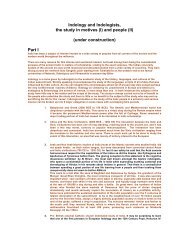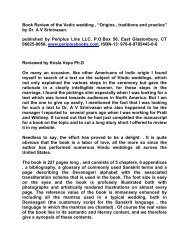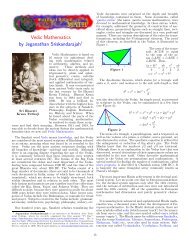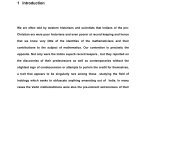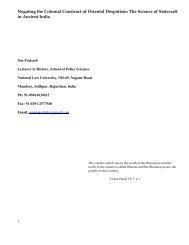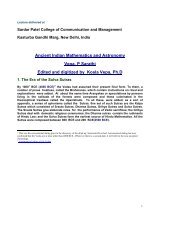The Dhaarmik Traditions - Indic Studies Foundation
The Dhaarmik Traditions - Indic Studies Foundation
The Dhaarmik Traditions - Indic Studies Foundation
Create successful ePaper yourself
Turn your PDF publications into a flip-book with our unique Google optimized e-Paper software.
the divine word to those parts where Jews and other infidels live, to preach and explain<br />
the truth of the Catholic faith in such a way that the infidels who hear them may come to<br />
recognize their errors. Let them compel them to hear their preaching.” 1. Centuries later<br />
in 1870, during the First Vatican Council, Hinduism was condemned in the “five<br />
anathemas against pantheism” according to the Jesuit priest John Hardon in the<br />
Church-authorized book, <strong>The</strong> Catholic Catechism. However, interests in Indology only<br />
took shape and concrete direction after the British came to India, with the advent of the<br />
discovery of Sanskrit by Sir William Jones in the 1770’s. Other names for Indology are<br />
<strong>Indic</strong> studies or Indian studies or South Asian studies. Political motivations have been<br />
always dominant in the pursuit of Indological studies right from the outset since the time<br />
of Sir William Jones, when he discovered the existence of Sanskrit. In fact the British<br />
presence in India was steadily increasing long before the Battle of Plassey in 1757 CE,<br />
but so great was the insularity of the colonial overlord that it took almost almost three<br />
hundred years for a scholar like Sir William to show up in India after Vasco da Gama<br />
landed of the cost of Goa in 1492 CE, and notice the similarities between Sanskrit and<br />
the european languages<br />
59<br />
60<br />
61 Indus script As yet undeciphered. Most <strong>Indic</strong>s believe that this was the forerunner of the Brahmi<br />
script…<strong>The</strong> brahmi script is the progenitor of almost all of the languages and scripts of<br />
India and most of the rest of South East Asia .<strong>The</strong> BrahmI script has all of the phonetic<br />
characteristics to be found in all the successor scripts of Asia. To suggest a semitic<br />
origin for a Brahmi script is highly problematical since semitic scripts (including all the<br />
Roman scripts of Europe) do not have the characteristic Vowel strokes that Brahmi<br />
62<br />
63<br />
64 Indus Valley<br />
Civilization<br />
scripts have whenever a vowel is appended to a consonant such as in आचायर् (the long<br />
'a' vowel is represented by a vertical stroke)<br />
AKA Saraswathi Sindhu Civilization, the civilization that endured for several millennia in<br />
the Saraswathi and Sindhu (Indus) river valleys the people who inhabited these valleys<br />
also known as the Vedic Harappans by Bhagwan Singh. Most of the recent excavations<br />
indicate a heavy preponderance of settlements on the banks of the dried up Saraswathi<br />
river. Mohenjo Daro and Harappa represent a late phase of the civilization. European<br />
Indologists go to extraordinary lengths to make a distinction between the Vedic<br />
civilization and the SSC despite the fact they are located spatially and temporally in the<br />
same place and time. That they got away with this subterfuge for such a long time (it is



